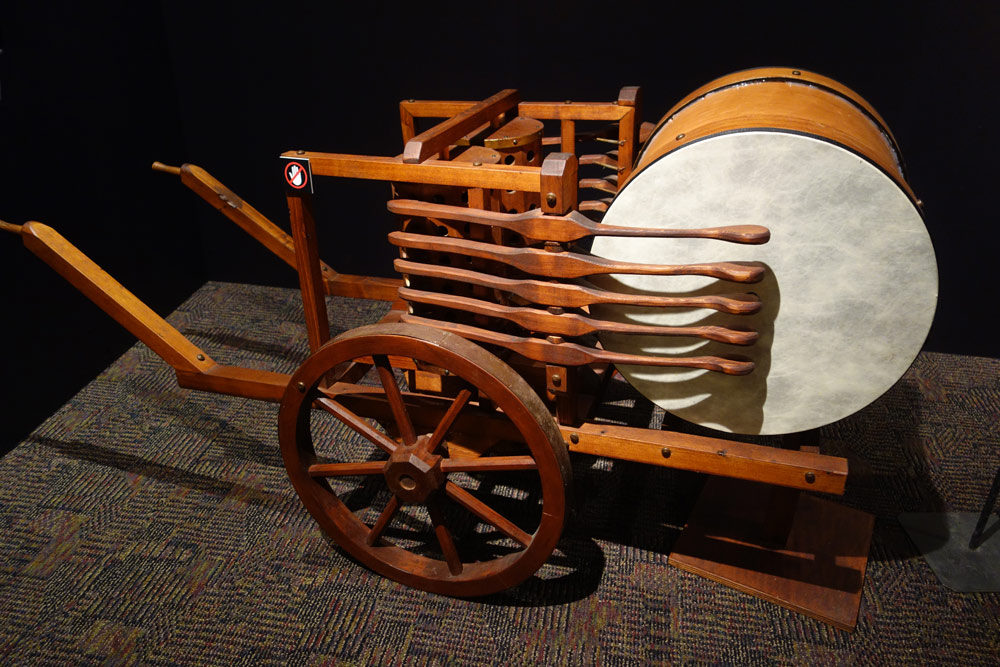
If we hadn’t spotted the announcement for today’s lecture in the morning paper we certainly would have spent the day outdoors. The gas company is replacing the lines on our street and attempting to move everyone’s meter outside. There is a lot of commotion out there and it was especially sunny.
Instead we settled into a darkened auditorium and struggled to understand French scientific engineer, Pascal Cotte, as he described the multi-spectral digital camera he designed to photograph the Mona Lisa for the Louvre. His camera takes images that are 240 million pixels using less light than the painting would receive in the gallery on a typical day.
His reconstructed photos show the incredibly detailed and intricate patterns of lacework on the clothing, You can see the individual strands of hair that made up the eye lashes and what’s left of the eyebrows. You can see DaVinci’s thumbprint in several places. He used it to spread the paint just so. The virtual restoration removes the varnish and restore the painting to the colors that were available in DaVinci’s day. You would think museums would be clamoring for this camera to authenticate paintings in their collection but Dr. Cotte says, “They do not want to know.”
Leonardo started painting the Mona Lisa in 1503 and kept her with him until his death, retouching and reworking her constantly and still felt she was incomplete. X-Rays reveal a different woman at the bottom of this painting. In 1911 an Italian worker at the Louvre stole the painting. He kept it in his home for two years. He added some orange paint to the picture and then tried to sell it to the Uffiza Gallery in Florence, calling it “her rightful home. A madman threw a rock at the painting in 1956. You can still see the damage.
The exhibit, on the top floor of the Museum & Science Center, has several reproductions of Dr. Cotte’s photos of the Mona Lisa along with seventy five of DaVinci’s life-sized, machine inventions. It is rather mind-blowing. The show makes it’s case. “DaVinci is surely the greatest genius the world has ever known.”
2 Comments
You refer to an exhibit. Where is it?
Sorry. Yesterday’s talk was part of the ongoing exhibit at the Rochester Museum & Science Center. I fixed the entry.